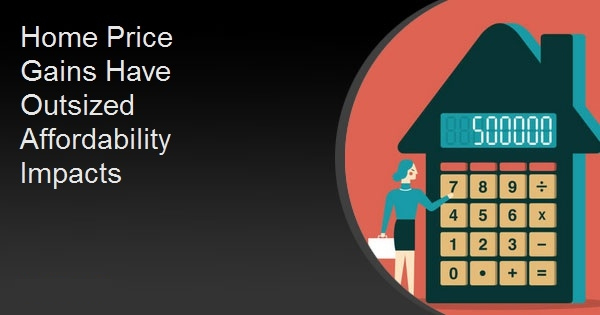Home Price Gains Have Outsized Affordability Impacts
According to the National Association of Homebuilders (NAHB), 87.5 million households, 69 percent of the nation’s total, cannot afford to buy a new median priced home because they lack sufficient incomes to qualify for a mortgage under standard underwriting criteria. The figure comes from NAHB’s annual “priced out estimates” which show how higher prices and interest rates affect affordability.
The author of the study, Na Zhao, says affordability was determined using a median new home price of $412,506 and a mortgage rate of 3.50 percent. This resulted in a monthly mortgage payment of $1,822. Given those parameters, as well as a fixed price of $493 for taxes and insurance, he estimated that the median household income needed to qualify for a mortgage is $99,205 per year. With that scenario, 39.205 million households could currently purchase that median priced home.
However, if the home price increased $1000, with all other criteria remaining the same, the additional $4 added to the monthly mortgage payment would raise the minimum household income required to $99,445. That added $240 per year would knock 117,932 households out of the ability to qualify for a mortgage.
NAHB’s housing affordability pyramid (below) represents the number of households that can only afford homes at or below a certain price. Using conventional assumptions and underwriting criteria, an income of $36,074 is needed to purchase a $150,000 home and about 36 million households have no more than that income. Each step on the pyramid represents a maximum affordable price range for fewer and fewer households.

The full priced- out study contains affordability figures for all housing markets covered by the Federal Housing Finance Agency’s Housing Price Index. The link to that study can be found here.





